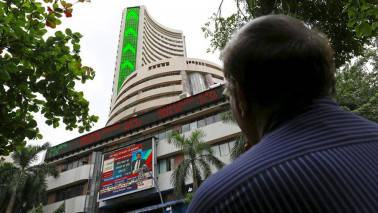Children born in the age of the internet are vulnerable to being on the receiving end of nasty comments and messages on their social media profiles.
Ruchira Kondepudi
Microsoft founder Bill Gates once said, "The internet is becoming the town square for the global village of tomorrow." In the era of group chats, likes, shares, and comments, connecting with people has never been easier.
The other side of this hyper-connected world is that it has provided a platform for people to spread hate through trolling and cyberbullying. For those on the receiving end, it may compromise their mental well-being.
Children born in the age of the internet are vulnerable to being on the receiving end of nasty comments and messages on their social media profiles.
Indian children are cyberbullied the most in the world, according to a recent survey by Ipsos.
The survey carried out in 28 countries said that 37 percent of Indian parents admitted that their children have been victims of cyberbullying.
The past year saw reports of dangerous games such as the 'Blue Whale Challenge' and the 'Momo Challenge' which led to multiple suicides.
The Blue Whale Challenge asked participants to hurt themselves and commit suicide as the final step and the Momo Challenge threatened users with scary images if they didn't fulfil certain 'orders'.
In a country with about 400 million internet users, awareness about cyberbullying is quite low. The Ipsos survey says 63 percent of people surveyed in India had heard of cyberbullying, significantly lower than the global average of 75 percent.
With an understanding of the nuances of online harassment, it is possible to make the internet a safer and more positive space.
What exactly does cyberbullying mean?
The Oxford Dictionary defines it as "the use of electronic communication to bully a person, typically by sending messages of an intimidating or threatening nature."
The definition set by the Ministry of Home Affairs (MHA), in its recently released handbook, includes images and videos.
"Cyberbullying means using internet or mobile technology to intentionally harass or bully someone by sending them rude/hurtful messages, comments and images/videos," the MHA said.
The 24X7 connectivity makes online bullying more harmful than physical bullying, Rohan Mahajan, founder of lawrato.com told Moneycontrol. The victims cannot avoid unsafe locations, which means that they are at constant risk.
Cyberbullying is a punishable offence in India under the Information Technology (IT) Act 2000 and the Indian Penal Code (IPC).
How does it impact a person's mental health?
Whether offline or online, bullying can be a traumatic experience that can have a spillover effect in one's daily life.
The American Psychiatric Association (APA) has found that those who’ve experienced cyberbullying are at a higher risk of suffering from mental health disorders.
The impact of facing abuse online can be strong and is often permanent, according to psychotherapist and founder of Mind Factory, Vihan Sanyal.
"Anxiety and Depression are common issues faced by these victims. If a person has faced abuse in the past or had underlying anxiety or depression, Cyberbullying can act as a trigger and increase the emotional discomfort associated with the disorders," Sanyal told Moneycontrol.
The MHA also warns that a student's academic performance can be affected by the emotional, physical and psychological consequences of cyberbullying.
How should a person respond to a cyberbully?
Not responding to hateful messages and comments, and blocking the aggressor is the appropriate way to deal with bullying through social media.
This strategy is applicable to both children and adults and is frequently used by celebrities when dealing with trolls.
"If a person is bullied by someone they know, the best way to respond is by being assertive, not aggressive, so that the bully gets the message that his or her behaviour is wrong," Sanyal said.
The MHA's guidelines for children include informing parents, teachers and other elders, identifying and blocking the bully, not responding aggressively, and saving hateful posts and messages.
The MHA also advices filing a police complaint if required.
Taking screenshots is a must as it can serve as evidence of the perpetrator's wrongdoing in the event of legal action.
How can parents help?
If a child complains of online abuse, parents shouldn't ask the child to delete his or her social media accounts, Sanyal said. This might cause the child to believe that he or she is being punished for something that is not their fault, he added.
"The child needs to be encouraged to deal with the bully assertively and use logic and reasoning. This is likely to frustrate the bully as his motive of negatively affecting the victim would be taken away," Sanyal said.
If the threats suggest physical harm, parents should inform the police at the earliest.
What is the punishment for cyberbullying?
The IT Act 2000 does not directly mention cyberbullying. But sending annoying, offensive and insulting messages through digital and information communication technology is punishable for up to three years in imprisonment.
Perpetrators can also be held accountable under some sections of the IPC, such as Section 507 (criminal intimidation), Section 509 (word or gesture intended to insult the modesty of a woman), Section 499 (defamation), Sections 354A, 354C, 354D (sexual harassment, voyeurism and stalking).
Experts believe there is an urgent need for stricter laws on cyberbullying.
"I believe that punishments should be made stricter so as to create a deterrent against questionable or deviant individuals," Mahajan said.
What measures have social media platforms taken?
Facebook said it will allow users to appeal decisions on reports of bullying and harassment while its photo-sharing platform, Instagram, had said in October that it will start using artificial intelligence (AI) to scan photos for abusive content.
In India, Facebook accounted for 86.56 percent of the social media market in October 2018, according to a survey done by StatCounter.
Facebook, Instagram, Youtube and Twitter all recommend unfollowing and blocking as the first step of dealing with unwanted communication.
On social media platforms, reporting a comment or post does not guarantee that it will be taken down. The platforms usually check if the content violates community guidelines.
"We've all seen something on the Internet we disagree with or establishes unwanted communication. Such behaviour does not necessarily constitute online abuse. If you see or receive a reply you don't like, unfollow and end any communication with that account. If the behaviour continues, it is recommended that you block the account," Twitter said in the guidelines listed on its Help Centre.
According to Mahajan, social media platforms should enforce more stringent measures and provide clarity on their procedure of dealing with reports of online harassment.
"Social media platforms should carry out information drives to bring about clarity and transparency as to the moderation policies in place with specific details regarding the internal process, the number of moderators, how decisions are made and the training and tools available to them," Mahajan added.














